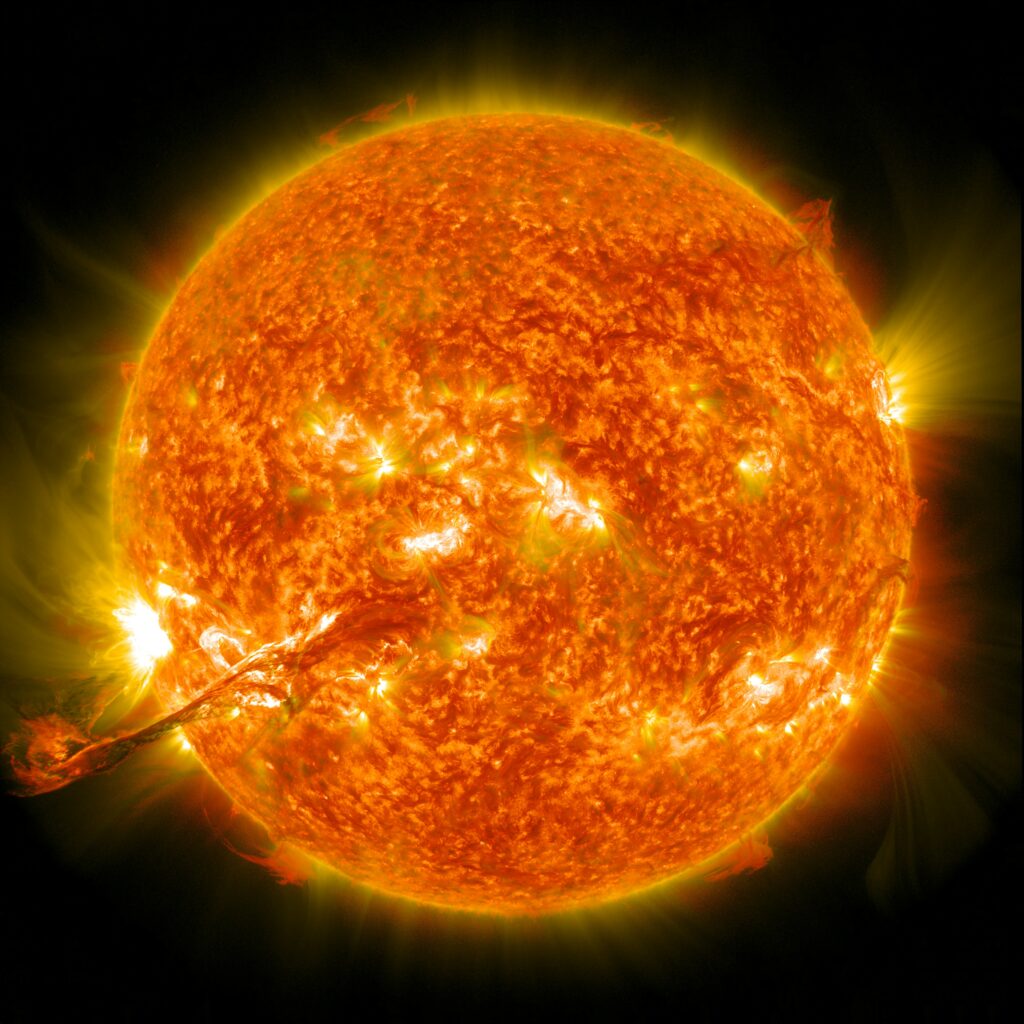A powerful solar eruption that occurred on June 2 has set off alarms among scientists and space agencies worldwide. This massive solar flare unleashed a Coronal Mass Ejection (CME)—a burst of solar plasma and magnetic field—that is now on a direct collision course with Earth, triggering warnings of a G4-class geomagnetic storm.
What Is a G4 Geomagnetic Storm?
The G4 classification is one of the highest levels of geomagnetic activity on the NOAA space weather scale, just below the most extreme G5 level. G4 storms are rare but intense, capable of causing significant disturbances in Earth’s magnetic field.
What Are the Potential Impacts?
- Satellite & GPS Disruptions
Communication systems, satellites, and GPS navigation could experience short-term disruptions due to the storm’s interference with the ionosphere.
- Power Grid Instability
Electric grids, especially in high-latitude regions, may face voltage fluctuations or even transformer damage if unprepared.
- Unusual Auroras
The solar particles could ignite spectacular auroras, typically confined to polar regions, in unexpected places. Areas in northern India, Europe, and parts of the U.S. might witness this rare light show.
Space weather events like this don’t just affect astronauts and satellites—they can disrupt the very systems we rely on daily, including aviation, communication, military operations, and power infrastructure. As our dependence on tech grows, so does the importance of monitoring solar activity. Space weather agencies like NOAA and ISRO are actively tracking the storm’s progress. If additional solar flares or CMEs are ejected, the intensity could increase further in the coming days.


